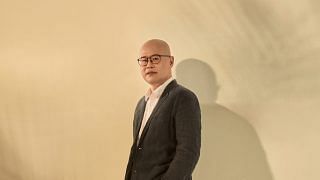01: BEAUTY IN THE WHOLE
The future of head and neck reconstruction could lie in the research of Adrian Ooi.
Adrian Ooi, associate consultant for plastic, reconstructive & aesthetic surgery at Singapore General Hospital, admits he would be lying if he said he doesn’t get annoyed at the common perception of his profession. “It’s so much more than just cosmetic surgery. We do a lot of reconstructive work for (patients with) burns, trauma, cancer and congenital malformations,” says the 36-year-old.

ADRIAN OOI ON…
Medical dramas “Shows like Nip/Tuck and The Celebrity Plastic Surgeons of Beverly Hills don’t paint the complete picture. I did enjoy Scrubs, though. It was hilarious and it’s a show with heart.”
His dream vacation “I’d disconnect from tech, go to a beach resort with my loved ones, have a good book, and a drink in hand — I love beer, Islay whiskies and a good Old Fashioned.”
And, while the cosmetic work is part of his job scope, Ooi spends most of his time fixing holes in people’s heads and necks and restoring eating and speech capabilities – problems caused by disease, accidents or congenital issues.
The St Bartholomew’s Hospital (UK) 2006 alum once considered being a heart surgeon, but after his basic surgical training in Singapore, it was plastic surgery that excited him most. “I realised I’d never get bored. I could be doing a rhinoplasty one day and reconstructing someone’s jaw using a bone from their leg, the next.”
The Lee Foundation Singapore Scholar – which he earned from good grades in his first two years of medical school – recently returned from a year-long fellowship at Chicago Medical Centre. While there, he trained in reconstructive microsurgery – using a microscope to hook tiny blood vessels together to give life to new tissue.
He has published more than 10 papers in peer review journals and is currently involved in departmental clinical and basic science research. An example is the comparison of bridging nerve gap techniques and finding new ways to achieve better outcomes than the gold standard. For that he was awarded “Outstanding Presentation” at the 2012 meeting of the American Society of Reconstructive Microsurgery, which honours the year’s best three research papers from submissions received
Ooi has taken time off every year since 2009 for mission trips. One is for Hainan Smiles – he performs cleft palate surgery and teaches local doctors in Chengmai County. Another is for Children of Cambodia, where he treats paediatric burns at the Angkor Hospital for Children. He says of these missions to help those in need: “It’s important not to lose sight of why we became doctors in the first place. It is a calling and a passion.”
(RELATED: How Crib co-founder Elaine Kim is empowering women’s dreams through entrepreneurship.)
02: TURMOIL LAID BARE
Ruben Pang’s artistic vision has gained him fans and widespread recognition.
You may have to strain to hear Ruben Pang’s colourful commentary on the prison that is modern society, but beneath that soft voice and delicate frame is an artist whose philosophy and work bristle with defiance. His paintings, often surreal and done on aluminium, are rarely planned and are, to him, a journey through the human condition. Anyone can come up with flowery narratives but the 26-year-old’s skill speaks for itself.
Pang’s work first caught the eye of Benjamin Hampe, the director and co-owner of Chan Hampe Galleries, at Lasalle’s graduation show in 2010, and his popularity has only grown since. During Pang’s national service, Italian gallery director Primo Marella contacted him through his website.
“I thought my friends were pranking me again because they’ve sent me silly requests before,” he recalls. But after realising that was the real deal and bonding over a shared passion for artist David Reed and rock band Nine Inch Nails, Pang started showing with Marella in 2012.
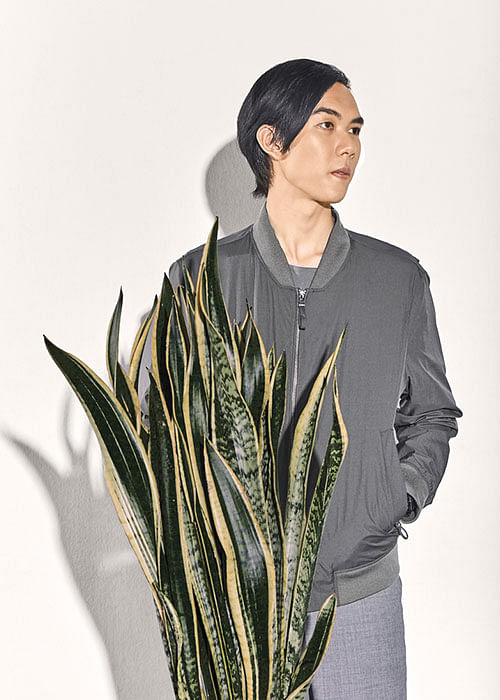
RUBEN PANG ON…
His childhood dream “I aspire to live as though my life were a film — worthy of being fiction. So last year, I spent a month in Japan learning the sport of drifting. But I started setting goals for myself. So my childhood dream of drifting turned into a self-assessment, and I’m glad that it did.”
His idol “Trent Reznor (musician and founder of Nine Inch Nails) struggled with depression and substance abuse. He pulled himself together through sheer willpower. He made me realise that you don’t always have to take the path of most resistance. Art sometimes needs to lighten up.”
He says: “That was a milestone, because he represents artists like Ronald Ventura and sells six-figure paintings, and he believed in me.”
Two years ago, Pang was invited by prominent Israeli collector Serge Tiroche for a residency in Jaffa, Israel, where he created 11 paintings.
His price range, which was about $2,000 to $8,000 in 2013, has more than doubled. During his solo shows, his works sell out on opening nights, and he’s put on 10 of them since 2011, in Singapore, Switzerland, Indonesia, Israel and Italy.
Despite being grateful for the spotlight, he embraces fame with caution. “The thing about success is that society makes it a divisive thing. It makes it easier for everyone to identify who’s useful,” he muses. “But what I want for myself is to have such a low standard of appreciation that everything becomes extremely exciting. The problem with being too successful and discerning is that you can’t appreciate anything.”
Pang is preparing for his next solo exhibition in Noosa, Queensland, on April 24.
03: NETWORK BY DESIGN
Jaelle Ang takes co-working spaces to the next level.
Since being launched late last year, The Great Room has reached full capacity in just four months, and is now home to 75 companies. Jaelle Ang’s winning touch? Cracking the code in merging great design with the co-working concept.
Says the architecture-trained Ang: “In co-working, they always say design is not important; community is important. But we believe good design attracts a like-minded community.”
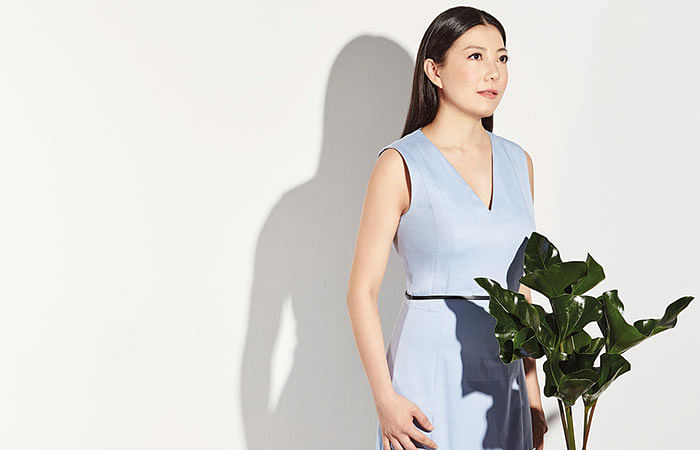
JAELLE ANG ON…
Holiday indulgences “The great hotels are sometimes so expensive. (My husband and I) would bootstrap our accommodation and stay at really cheap places for several nights, then splurge on one night at the No. 1 hotel in the city.”
Her comfort food “My mummy’s cooking. She still cooks soup over charcoal every day.”
She may have headlined the largest waterfront mixed-use development in Bangkok, and spent several years in banking, but, for Ang, her latest start-up, the hospitality-inspired co-working space, is keeping her on her toes. “Co-working is very new and it’s evolving very, very fast. You have to keep up and lead; you have to look, learn, innovate, and reiterate very quickly. That’s probably the hardest thing to do,” says the 37-year-old.
Today, she is particularly gratified to see The Great Room bring co-working to a more sophisticated audience. “We’ve designed a space that’s more grown-up than start-up,” she shares. “It’s really for the person who’s travelled a bit and seen great design. They want to have it all – they want it professional but they want it with style as well.”
Notably, the space has attracted some top-tier clients – including Design Hotels and Xero – and several fast-growing start-ups. “It’s co-working 2.0; it’s the next evolution of co-working that’s not just catering to the millennials or the backpack brigade,” says Ang.
No surprises that The Great Room has already been billed as the “Four Seasons of co-working”. She is already planning to launch two more spaces in Singapore this year, and also farther afield in Jakarta, Sydney, Shanghai and Bangkok.
But she isn’t resting on her laurels. “Once you know you’ve got a winning formula, you know everyone will learn and follow. So you cannot sit on it; you have to execute fast, and things have got to change.”
(RELATED: Exactly where does the well-travelled Ang like to eat?)
04: THREE-HIT WONDER
Nicolas Travis hit the big time a skincare trio, but he’s not stopping there.
You would expect the founder of a skincare brand to have flawless skin, and 29-year-old Nicolas Travis’ skin is indeed luminous, which isn’t (just) a result of meticulous maintenance, but also of a passion that burns from within.
Resolve and self-belief have resulted in his brand Allies of Skin becoming the first Singapore skincare label to be listed on Mr Porter, Space NK Apothecary, Farfetch and Net-A-Porter – in just seven months since the launch of its products last March. It will also hit Barneys New York’s online shelves in March and select Sephora Web stores next month.
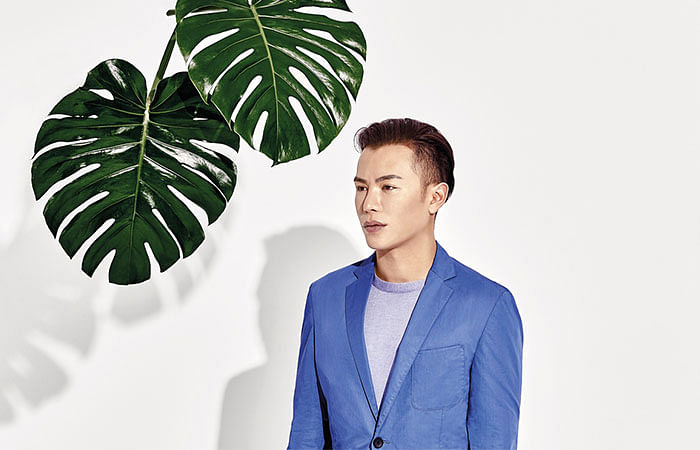
NICOLAS TRAVIS ON…
Self-indulgence “I go on Michelin eating tours around the world. My favourite restaurant is Dstage in Madrid – everything is so fun. Here, I like Burnt Ends, Waku Ghin, Tatsuya and Tippling Club. I don’t cook but I make great reservations.”
The weirdest treatment “I had a platelet-rich plasma treatment in South Korea, where they put you under, extract your blood, enrich it with platelets and inject it back into your skin. It’s supposed to regenerate collagen – that’s how the skin of Korean pop stars looks perpetually dewy.”
After graduating from a French business school in 2012, the then 24-year-old got a sensible job working as a digital analyst at Ogilvy Public Relations. But after nine months and dissatisfied with his work, he decided to put his prior biomedical and pharmaceutical science studies to better use.
He spent two and a half years developing a product that became the 1A All-Day Mask, which you can leave on all day, even under makeup and sunblock.
“I actually created a business plan for a skincare start-up company when I was doing my master’s in international business,” he says. “But that model was based on an infusion of a million dollars, so I thought I’d scale back and create just one product nobody else has.” He went on to formulate the 1A Overnight Mask and the Molecular Saviour Toner Mist. The three have made more than half a million in Singapore sales.
“People think I’ve achieved so much in under a year but they fail to see the time I spent creating the formula, getting in the right headspace, travelling and making the right connections,” he says.
He’s launching the world’s first hydrating chemical peel by this month end and a “trifecta booster” in May.
05 & 06: LEADERS OF CHEERS
Indra Kantono and Gan Guoyi are bringing fun back to Singapore’s drinking scene with their chart-topping bars, three of which were listed among Asia’s 50 Best Bars last year.
Opening and maintaining five successful F&B establishments in five years is aggressively optimistic even for a seasoned restaurateur, but Indra Kantono and his wife, Gan Guoyi, managed to hit the ground running with no prior experience in the industry.
This year, the first three of their establishments – Jigger & Pony, Sugarhall and Gibson – earned coveted spots on Asia’s 50 Best Bars 2016. Barely hitting their 30s – Kantono is 32, Gan 31 – they have the distinction of being the group with the most Singapore bars ranked on a list that includes 28 Hongkong Street, Operation Dagger and D.Bespoke.
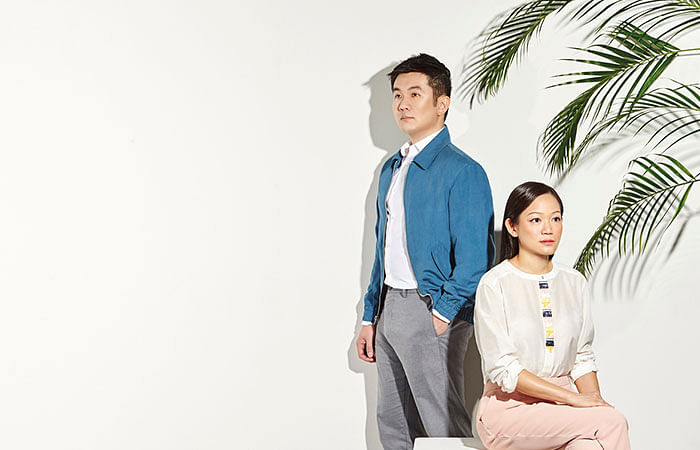
INDRA KANTONO AND GAN GUOYI ON…
Their most prized bottles “We love the super rare Antique Collection by American whisky maker Buffalo Trace Distillery. It took us about three years to get our five bottles, though they are from different years.” – Gan Guoyi
Other bars “On the weekends, we like catching up with friends, some of whom are in the same industry. We hang out at ours, at theirs, or at completely new bars. One of my favourite bars here is Operation Dagger because I like finding out what their latest crazy concoction is.” – Indra Kantono
Each bar’s unique concept contributed to the pair’s winning formula. Jigger & Pony, which opened in 2012, delivers classics with respectful precision, while vintage-styled cocktail bar Gibson (2015) impresses with its original creations. Sugarhall (2012) fills a gap in the market by offering an immense selection of rum alongside comforting nosh.
A profound understanding of what makes good service, thanks to Gan’s time with Singapore Airlines, adds to the establishments’ popularity. “A lot of customers have become our friends, and they sometimes visit our venues more often than we do,” says Gan. Kantono notes that it’s the little things, like stopping what they’re doing to bid customers goodbye on their way out, or offering a shawl to someone who looks cold, that truly matter.
“When hiring, we believe in (New York restaurateur) Danny Meyer’s philosophy of 49 per cent skills and 51 per cent attitude. So we look for people who have the skills for the job and, more importantly, who have the energy and can-do attitude with which to deliver our brand of hospitality,” Kantono says.
Indeed, Jigger & Pony’s Boo Jing Heng was crowned Diageo Reserve World Class Singapore Bartender of the Year 2016, winning the judges over with a dessert cocktail he made using Japanese adzuki beans. Boo came on board in 2012 with no prior experience, and trained under the auspices of Kantono and Gan’s People Pipeline programme.
Kantono and Gan have studied what the world’s best restaurants and bars do best, and have even looked to online retailers like Zappos, who are known for excellent customer service, to see what they could bring to their own brands. “We love the ballet-like performance of Japanese cocktail techniques, the warm hospitality of the Spanish, and the exciting concepts, stories and energy New York offers. We wanted to combine all three when we launched Jigger & Pony,” says Kantono of their first bar, which celebrates its fifth anniversary this year.
Similar international inspirations have driven their subsequent ventures, and when an opportunity to buy a shophouse on Bukit Pasoh came up, they seized it to house Gibson and two new concepts – whisky dive joint The Flagship and seafood restaurant Humpback. “We plan to continue growing and opening exciting new restaurants and bars with the same hospitality DNA, so watch this space,” concludes Kantono.
07: EYE FOR START-UPS
Forget the spiel, angel investor Rina Neoh looks for heart and grit.
After more than a decade as an angel investor, Rina Neoh knows a thing or two about spotting potential. After all, the 35-year-old left a cushy corporate job and took the plunge to start Mercatus Capital – a venture capital firm – in 2006, at a time when the start-up scene in Singapore was barely existent.
Today, Neoh has grown the initial fund of S$200,000 in 2006 to around US$20 million (S$28 million) to US$30 million, and propelled around 30 start-ups, such as Time Medical Systems and Ascendant Technologies, to success.

RINA NEOH ON…
Overcoming setbacks “I don’t hold on too much to the past. Whatever is lost, I tell myself: I’ve paid a very expensive ‘tuition fee’; it’s as if I’ve been to an Ivy League school.”
On start-ups selling up or becoming listed “If there’s an exit this year, that’s good; if there’s none, next year is fine.”
Her winning touch? A sharp eye for founders more likely to survive the game. “When my partners and I started, we were impressed by nice presentations and numbers,” she says. “Today, after seeing so many presentations, it boils down to the character of the person we’re investing in.” The savvy investor says honesty and flexibility are key to entrepreneurial success, and is particularly hands-on in testing the mettle of a potential founder – from ringing up a candidate at different times of the day, to asking out-of-the-box questions.
“If this person is going to be the one we’re investing in, he needs to be ready all the time. How someone responds to a situation is crucial to us,” she says. “If a founder is just here for the money and they’re not open to discussing and listening, they’re better off going to a fund.”
Neoh also believes women have an edge when it comes to gauging character. “When it comes to reading people, most women are more observant of a whole situation and body language,” she says.
And, while female angel investors are still a minority, Neoh is distinctly comfortable in her own skin. “Some founders, even women, tend to just listen and not participate in a discussion,” she says. “I’m more vocal; I would actually have a conversation, than just sitting in and listening.”
08: THE SOCIAL HELPLINE
Kwok Jia Chuan, Asia’s first social consultancy co-founder, empowers non-profits to do good better.
Like others in his generation who want purpose-driven work, Kwok Jia Chuan, 30, gravitated towards volunteerism six years ago, albeit a little differently. “I wanted to create an organisation where people can give not just their time, but their skills and talents back to society,” says the government and political science graduate from the London School of Economics and Political Science, and Massachusetts Institute of Technology.
Together with co-founder Jeremy Au, he launched Conjunct Consulting, a non-profit that offers pro bono management consulting services to other non-profits and social enterprises. Since 2011, Conjunct has deployed over $3.5 million worth of services, delivering on 117 consulting projects with 77 non-profit partners. Conjunct works with 300 to 400 volunteers at any given time.
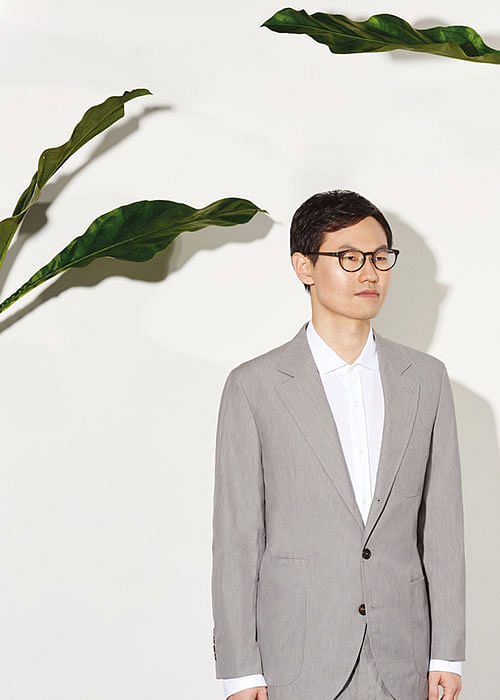
KWOK JIA CHUAN ON…
The last time he treated himself “I went on a 10-day silent meditation retreat with Jeremy (Au) in Japan last year, as we felt a little burnt out. There was just a hut and a meditation hall; we were not allowed to write, speak, exercise or eat meat, and had to meditate for 10 hours a day.“
How he’d spend $1 million “I’ll treat my family to a holiday for putting up with me, using 10 per cent of the money. Then I’ll use the rest to create a fund that will jump-start movements that help refugees, those in need of food and water, and in disaster management, and so on. I see money as a means instead of an end. There’s no point in hoarding it.“
They received a commendation at the President’s Challenge Social Enterprise Award in 2013. Kwok says: “We earned it for the two-way impact we made on both our student and professional volunteers, exposing them to the social sector and showing them a way to do good that would have a catalytic impact.” He counts investment bankers, civil servants and HR consultants among his professional volunteers.
In 2014, Conjunct created a sustainable funding model for Dayspring Residential Treatment Centre, which aids abused teenage girls. Months later, President Tony Tan attended the opening of the centre’s new care facility, in recognition of their expanding ability to serve their cause.
The beginning was tough for the then 20-somethings. “People said we were too young,” Kwok recalls. After reaching out to 100 companies, only four responded.
“Slowly, we established our credibility in the social sector by offering top-notch solutions,” he adds. Conjunct also worked with the Jane Goodall Institute (Singapore) to build a volunteer community, and put best practices in place. “Our reputation has spread in the community and is now leading to new organisations trusting us to deliver.”
(RELATED: [VIDEO] Crib CEO, co-founder Elaine Kim on women and leadership.)
![]()




